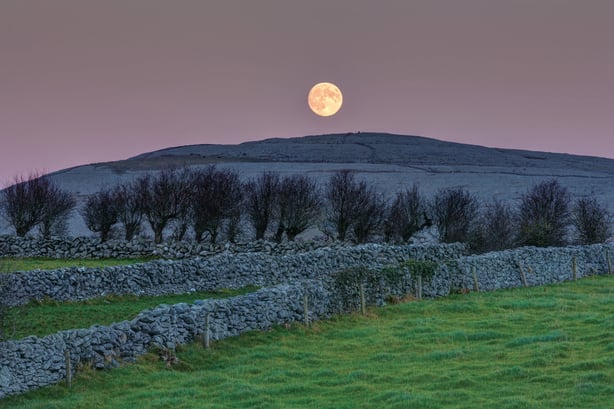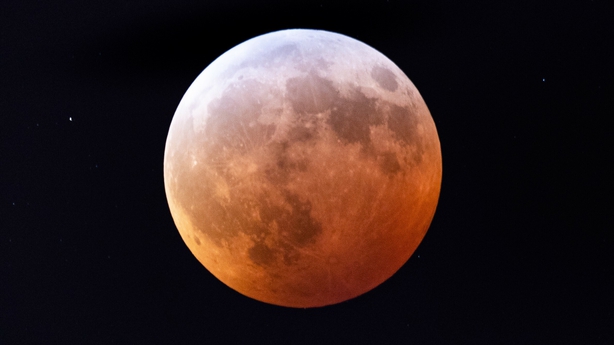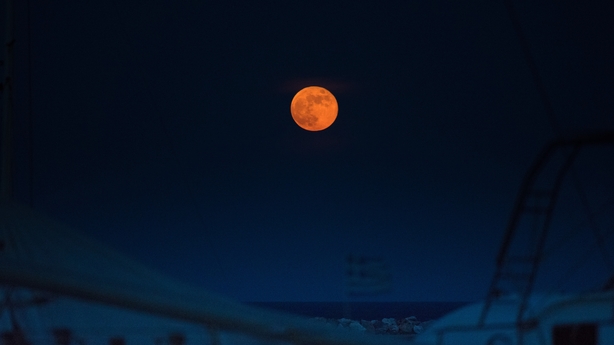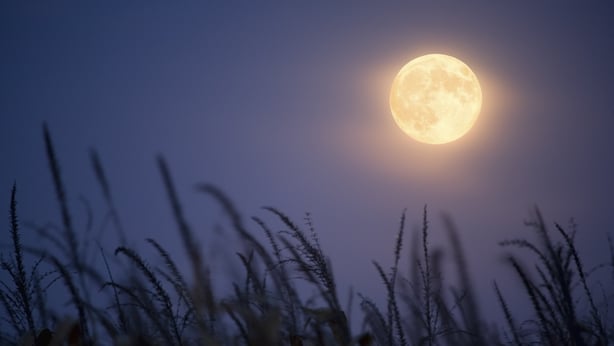Tracking the moon and its cycles of waning and waxing stems from an ancient form of time-keeping, with moon phases coinciding with and signalling certain communal events - harvesting, animal mating seasons, hunting.
The Native Americans were particularly dedicated to this, giving each full moon a name to help them track seasons instead of with calendars, although each tribe could differ on how they tracked moons.

But as well as this, there is the equally ancient and culture-spanning belief that lunar cycles have the power to affect mood, behaviour and even entire sequences of events. So if you've ever thrown a tantrum and blamed it on the moon, you may not be far wrong.
A full moon happens when the moon is completely lit up by the sun's rays, which occurs when the Earth is directly aligned between the sun and moon. This happens roughly every 29.5 days, meaning there are 12 full moons in a year.
So, whether you want to touch base with your inner farmer, learn when best to cleanse your crystals or just know when to look out for a particularly beautiful moon, here are the dates for full moons in 2020.
January 10 - Wolf Moon
Named for the packs of wolves that would howl with hunger this time of year, the Wolf Moon is also called Old Moon, Ice Moon and Snow Moon. As the first full moon of the year, it is typically associated with harsh weather.
This year's Wolf Moon also featured a penumbral lunar eclipse take place, which happens with the moon moves through the outer part of the Earth's shadow.
February 9 - Snow Moon
Named for the snowiest month in America, historically, the Snow Moon can also be called the Hunger Moon as resources would be typically running low by this time in the year and hunting would be more challenging.
Falling so close to Valentine's Day - a day of heightened, impassioned and maybe irrational feelings for some - the temptation to blame all love-related mishaps on the moon would be high, but if you're someone who marks full moons with intentions, now would be a good time to do so for love and happiness.
March 9 - Worm Moon
Less romantic a name than the Wolf or Snow Moons, the Worm Moon is named for the casts of earthworms that would start to become visible this time of year as temperatures warm up. It's also known as the Sap Moon, Crow Moon and Crust Moon, while its Anglo Saxon name is the Lenten Moon.
This year, the Worm Moon will be our first super full moon of 2020, appearing up to 30% brighter and 14% bigger to the human eye.

April 7 - Pink Moon
Warmer temperatures, longer evenings and blooming flowers all make April one of the most romantic months, so it's no wonder its full moon is the Pink Moon, named for blossoming wildflowers this time of year. Also known as the Egg Moon, it coincides with spring egg-laying season.
The Pink Moon is always important as it is used to set the date of Easter, which is always the Sunday after the first full moon after the spring equinox.
This year's Pink Moon will also be noteworthy as the second super full moon of the year.
May 7 - Flower Moon
As the high point of spring, this full moon is named for the flower-filled month of May.
Coming at a fertile time, this full moon is also known as Corn Planting Moon, as crops are sown in time for harvest, or Milk Moon, as May was previously known as the "Month of Three Milkings".
June 5 - Strawberry Moon
Another example of using full moons to mark out farming schedules, this month's moon is named for the start of the strawberry picking season, when the red fruits would be at their juiciest. It's also been called the Rose Moon or the Hot Moon, as a rather obvious nod towards hot summer weather.

July - Thunder Moon
Another nod to weather, the July full moon was named for the tumultuous summer thunderstorms that can still plague American states. It has also been called the Full Buck Moon, as by this month a buck's antlers would be fully grown.
Last year's Thunder Moon was particularly auspicious for astrologers and astronomers alike, as it fell on the anniversary of the Apollo 11 mission, as well as on the same night as a partial lunar eclipse.
August 3 - Sturgeon Moon
Sturgeon was a prized resource for Native American tribes and would typically be caught around August. During the last month of summer, grains would also be harvested for the oncoming cooler months, so this full moon could also be called Grain Moon.
September 2; October 1 - Full Corn Moon and Harvest Moon
Arguably the most famous and well-known full moon of the year takes place during September, with the Harvest Moon marking the period when most of the harvesting was completed for the harsh winter ahead. This full moon, with its enhanced brightness, would lend more light to farmers in the evening, allowing them to work that bit longer.
It also inspired one of Neil Young's most beloved songs, Harvest Moon.
Other names nod towards the farming practices of the time, such as Full Corn Moon, Barley Moon or Fruit Moon. However, as the Harvest Moon is the one that falls closest to the Autumn Equinox, this important moon can come in either September or October. Autumn Equinox this year falls on September 22, with the closest full moon falling in October. So, September's full moon will be known as the Full Corn Moon, with the first of two full moons taking place in October being named the Harvest Moon.

October 31 - Hunter's Moon
If you're looking for a clever Halloween costume this year, why not take inspiration from the October full moon and dress as a hunter? With crops harvested, October was the month for hunting wildlife, as animals would be fatter from eating fallen grains.
Poetically, this full moon is also called the Travel Moon and the Dying Grass Moon.
November 30 - Beaver Moon
Working as a fitting reminder to bunker down and cosy up ahead of the harsh winter, this full moon is named for the beaver, which typically started building its dam around this time of the year. Because this month would also typically see the frost settling in, this full moon is also known as the Frost Moon.
December 30 - Cold Moon
Look, it's the end of the year, names aren't going to be as romantic or poetic as they were at the start. Simply named, the Cold Moon falls in the depths of winter. There are more inventive names for it, however, as December's full moon was also called the Moon before Yule and Long Nights Moon.

